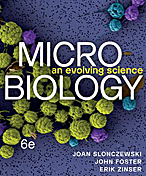User:S4371879: Difference between revisions
No edit summary |
|||
| Line 46: | Line 46: | ||
1. [http://www.ncbi.nlm.nih.gov/Taxonomy/Browser/wwwtax.cgi?id=2047] | 1. [http://www.ncbi.nlm.nih.gov/Taxonomy/Browser/wwwtax.cgi?id=2047] | ||
2. [http://ijs.microbiologyresearch.org/content/journal/ijsem/10.1099/00207713-17-1-79] | 2. [http://www.bacterio.net/rothia.html] | ||
3. [http://ijs.microbiologyresearch.org/content/journal/ijsem/10.1099/00207713-17-1-79] | |||
1. [http://onlinelibrary.wiley.com/doi/10.1046/j.1462-2920.1999.00007.x/full Sahm, K., MacGregor, B.J., Jørgensen, B.B., and Stahl, D.A. (1999) Sulphate reduction and vertical distribution of sulphate-reducing bacteria quantified by rRNA slotblot hybridization in a coastal marine sediment. Environ Microbiol <b>1</b>: 65-74.] | 1. [http://onlinelibrary.wiley.com/doi/10.1046/j.1462-2920.1999.00007.x/full Sahm, K., MacGregor, B.J., Jørgensen, B.B., and Stahl, D.A. (1999) Sulphate reduction and vertical distribution of sulphate-reducing bacteria quantified by rRNA slotblot hybridization in a coastal marine sediment. Environ Microbiol <b>1</b>: 65-74.] | ||
Revision as of 04:39, 8 September 2016
Jeniffer Denisse Loaiza Naranjo Bench D 31/08/16 [1]
Classification
Higher order taxa
Bacteria – Terrabcateria group – Actinobacteria – Actinobacteria – Micrococcales – Micrococcaceae – Rothia
Species
Rothia dentocariosa ATCC 17931
Description and significance
Give a general description of the species (e.g. where/when was it first discovered, where is it commonly found, has it been cultured, functional role, type of bacterium [Gram+/-], morphology, etc.) and explain why it is important to study this microorganism. Examples of citations [1], [2]
Genome structure
Select a strain for which genome information (e.g. size, plasmids, distinct genes, etc.) is available.
Cell structure and metabolism
Cell wall, biofilm formation, motility, metabolic functions.
Ecology
Aerobe/anaerobe, habitat (location in the oral cavity, potential other environments) and microbe/host interactions.
Pathology
Do these microorganisms cause disease in the oral cavity or elsewhere?
Application to biotechnology
Bioengineering, biotechnologically relevant enzyme/compound production, drug targets,…
Current research
Summarise some of the most recent discoveries regarding this species.
References
References examples
1. [1]
2. [2]
3. [3]
- ↑ MICR3004
This page is written by<Jeniffer Denisse Loaiza Naranjo> for the MICR3004 course, Semester 2, 2016
